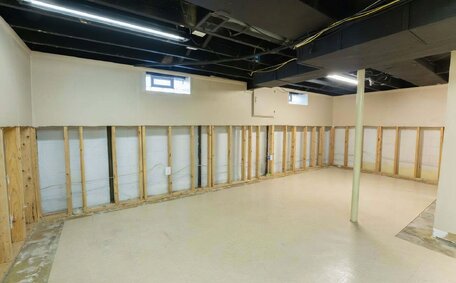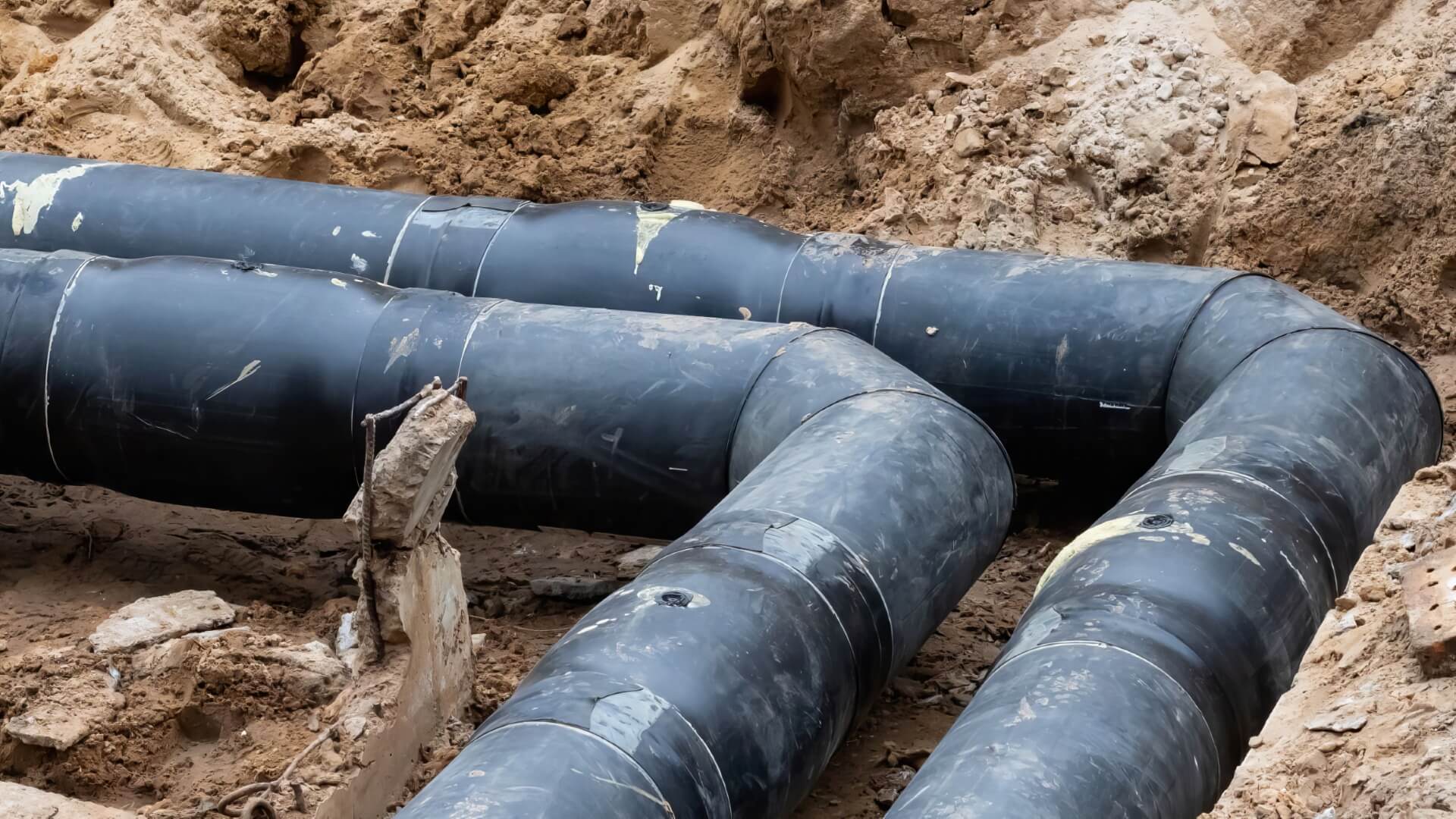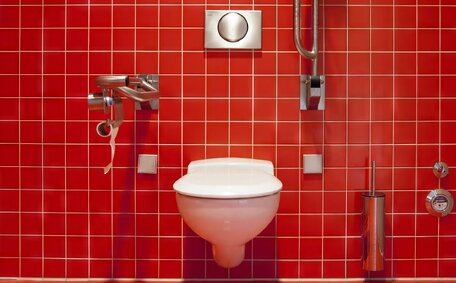Introduction to Pipe Relining
Pipe relining effectively addresses tree root invasions, with 'cured-in-place pipe’ (CIPP) technology presenting multiple benefits compared to conventional replacement techniques.
Pipe relining typically involves inserting an epoxy resin-coated liner into the damaged pipe and curing it to form a robust new pipe inside the existing one.
UV relining and comparable non-invasive techniques provide a less disruptive option than excavating damaged pipes, promoting post-operation cleanliness and minimal environmental impact.
CIPP liners can match or exceed the flow capacity of old pipes, with the resin-saturated liner creating a structurally sound pipe inside the existing one to maintain uninterrupted water flow.
No-dig pipe relining is both a time-saver and cost-effective, eliminating excavation, speeding up the repair process, and cutting down equipment costs.
This article offers valuable insights into assessing the durability of relined pipes, highlighting the importance of proper testing for plumbing system longevity.
Our non-invasive methods efficiently assess relined sewer pipes, enabling early detection and intervention, thus preventing imminent plumbing problems.
Common Methods for Testing Pipe Integrity
There are several common methods used to test the integrity of relined pipes and ensure the pipe relining technology has been properly installed and cured.
Integrity tests involve filling the pipe with water and applying pressure 1.5 times the standard level, checking for leaks under high-pressure conditions to verify the liner’s capacity to handle typical flows.
Air Pressure Testing
Air testing involves sealing off the line and applying controlled air pressure to detect leaks or defects. A decrease in pressure over time suggests a potential problem. Like hydrostatic testing, this is non-destructive and tests the structural soundness of the liner.
CCTV Inspections
A CCTV camera inspection provides a detailed internal view, detecting defects or anomalies in the liner without excavation.
Smoke Testing
Smoke is pumped into the line under pressure then observed for any leaks indicating defects in the liner. Cameras capture the locations where smoke exits. This qualitative test quickly reveals liner issues.
Dye Flooding
Coloured dye is flooded into the system then inspected externally for any leakage or weeping. Dye emerging from cracks or joints indicates liner defects. This method offers clear visual confirmation of leaks.
Routine, non-invasive testing is vital for early issue detection, preserving system integrity and preventing costly repairs later.
Visual Pipe Inspection Techniques
Using CCTV technology for visual pipe inspections with cutting-edge equipment is an essential first step in evaluating the condition of old pipes in updated plumbing systems. Techniques like CCTV inspections allow plumbers to actually see inside pipes and look for defects, cracks, obstructions or other issues.
CCTV camera inspections involve checking the pipes without needing to open them up, feeding a camera probe into the pipeline to provide a live video feed and record footage of the interior. The camera is mounted on a tractor device and traverses through the pipe, transmitting CCTV footage and images. This method produces detailed technical data that clearly identifies any issues for thorough analysis.
CCTV inspection has numerous benefits:
- It is completely non-destructive and non-invasive.
- This strategy can take on the task of inspecting the entire pipeline, including areas that are notoriously difficult to access.
- It clearly shows any cracks, holes, joint offsets, obstructions or other defects.
- Footage provides visual evidence of any weaknesses or failures.
The video footage captured can be reviewed and analysed in detail after the inspection. Any deficiencies threatening the structural integrity of the newly relined piping are identified. This technique also pinpoints the precise location, characteristics, and scope of any damage.
Other visual methods like smoke testing or dye flooding also allow plumbers to actually see potential leak points or other anomalies. But CCTV provides the most comprehensive interior view of the liner for assessment.
CCTV-assisted visual inspections are imperative for monitoring relined pipes and managing potential failures early in the maintenance cycle.
Leak Detection Testing
Leak detection testing is essential to carry out for locating potential defects, cracks or weak spots in a relined pipe that could lead to failures down the road. Techniques like smoke testing and dye flooding are critical in repairing damaged areas, as they allow plumbers to pinpoint leaks and seepage that indicate flaws in the liner.
Smoke testing, which is particularly effective for detecting leaks in broken pipes, involves sealing off the line and filling it with non-toxic smoke under pressure. The smoke emerges from any fissures, openings or disjointed joints and can be directly observed or recorded using cameras. Similarly, flooding the line with coloured dye will reveal any leakage points.
This method tests relined pipes without risk, delivering clear visual proof of leaks without excavating or damaging the pipe. They can survey the entire line to identify weaknesses and problem areas. Early detection of leaks and blockages in your drains is pivotal in allowing plumbers to seal potential leak points and prevent larger issues before they occur.
There’s no collateral damage with non-invasive testing methods, which are highly preferable for monitoring relined pipes, as they avoid additional repairs or weakening of the system. The pipe stays fully intact and structurally sound.
Routine leak detection in sewer pipes also yields environmental benefits. Identifying and sealing seepage promptly prevents any contamination or pollution from piping failures. And proactive drain cleaning prevents full-scale ruptures, thus avoiding spills, sinks and costly emergency repairs.
Overall, non-destructive leak tests are direct and effective for confirming the reliability of relined pipes. They should be part of any preventative maintenance programme to maximise the longevity and performance of CIPP liners.
Hydrostatic Pressure Testing
Hydrostatic pressure testing is an important technique where relining can validate the structural integrity of a pipe. It involves filling the pipeline with water, sealing it off, and increasing the internal pressure to 1.5 times the maximum operating pressure.
As the pressure builds, the pipeline is monitored closely for any leaks, weeping or drips that would indicate flaws in the CIPP liner. The test confirms that the relined pipe can withstand normal pressure flows without failure or seepage.
Hydrostatic testing is wholly non-destructive, posing no harm to the pipe. The water is simply pumped in and pressurised. As long as there’s no leakage and the relined pipe maintains its integrity against the pumped pressure, it passes the test.
This qualitative test provides plumbers with confidence that the liner has cured and bonded correctly, forming a robust pipe within the old structure. The test confirms the absence of gaps, fissures, or weaknesses in the new pipe that could cause future leaks or breaks under typical use.
Standard practice stipulates hydrostatic testing after any pipe relining project to be well integrated into existing sewer lines as part of a comprehensive maintenance and quality assurance programme. Periodically re-testing also allows early detection of new leaks or weaknesses that may develop over time. This enables proactive repair to keep the system sound.
Advantages of Non-Invasive Testing
Non-invasive testing methods offer numerous advantages for assessing relining pipe, making them the preferred approach for ongoing maintenance and monitoring.
These non-destructive techniques are highly effective, ensuring quick inspection and leak identification without upsetting the pipeline or obstructing the sewer. There is minimal disruption to properties or infrastructure. This also provides cost savings compared to dig-ups or pipe replacement.
Non-invasive tests like CCTV inspections, smoke testing and hydrostatic pressure testing can survey entire pipelines and pinpoint potential flaws or weaknesses early, ensuring the job done facilitates timely pipe repairs. This enables plumbers to make localised repairs before small issues become large failures.
Bypassing excavation prevents additional soil or landscaping destabilisation. It also reduces environmental impact and contamination risk from ruptured pipes. Overall less repair work is required to keep systems sound.
At St Peters Plumbing, non-destructive testing methods for drain pipes are part of our renowned pipe relining services, available to residential and commercial clients across various regions. Proactive plumbing services maintain infrastructure investments and prevent costly emergency repairs over the long run.
In case of plumbing concerns, regular non-invasive testing will maintain the condition of your systems. Contact us for a free quote on a preventative maintenance program for your property.
When to Call a Professional Plumber
In specific circumstances, it’s prudent to enlist a professional plumber like St Peters Plumbing for pipe testing and maintenance:
- If you lack the proper equipment - Professional plumbers have access to tools like CCTV cameras, pressure testing rigs and leak detection dye/smoke machines that are not readily available to homeowners.
- For your commercial plumbing systems in large-scale operations - like commercial buildings and apartment blocks - you’ll need qualified technicians to assess appropriately.
- When DIY tests are inconclusive - If your own basic tests don’t reveal an obvious problem, an expert evaluation is recommended.
- To establish a maintenance schedule - Plumbers can advise on the optimal frequency for testing different types of pipes, considering their materials, age, and typical usage patterns.
- If you are unable to conduct tests safely - CCTV inspection, pressure testing and other techniques require technical know-how to perform safely.
- To ensure compliance - Licenced plumbers can conduct and certify testing to meet building codes and insurance requirements.
- For pipe relining Sydney assessment - Qualified plumbers from our Sydney office provide an expert, third-party evaluation of pipe condition.
When contacting St Peters Plumbing, expect professional service and thorough pipe testing to assess your plumbing system’s condition. Reach out for assistance with relined or existing pipes.
If you lack the proper equipment - Professional plumbers have access to tools like CCTV cameras, pressure testing rigs and leak detection dye/smoke machines that are not readily available to homeowners.Signs of Pipe Relining Failure
There are several warning signs that may indicate a failure in a relined pipe:
Persistent Leaks or Dampness
If you notice persistent water leaks, drips or dampness around the relined pipe, this likely indicates cracks or holes in the liner allowing water to seep through. Catching leaks early is crucial before major failures occur.
Blockages and Drainage Issues
If a relined pipe becomes frequently blocked or drainage flows poorly, the liner may be defective. Obstructions, offset joints or damaged sections can impede flow. CCTV inspection can identify problem areas.
Unusual Noises
Strange gurgling, bubbling or rushing water noises from relined pipes can signify leaks and air pockets within the liner where water is escaping. This needs immediate investigation.
Deformation
Bulges or dents along the pipe may indicate liner failure allowing the existing pipe to deform under pressure. This deformation can further compromise the structural integrity.
Acting swiftly at the first signs of relining failure is crucial, and St Peters Plumbing has the expertise to inspect and address issues promptly.
There are several warning signs that may indicate a failure in a relined pipe:
If you notkely indicates cracks or holes in the liner allowing water to seep through. Catching leaks early is crucial before major fproperty.
Personal Protective Equipment
Rest assured, this is how we conduct pipe repair, with safety as a priority, with technicians wearing appropriate PPE, including gloves, eye protection, and respiratory gear during all services. Confined space training may be required for pipe access.
Hazardous Materials
Pipes could potentially have harmful substances, a caution that our customers ought to remain cognisant of. Take precautions against leaks or exposure when cutting into lines. Have containment measures ready.
Buried Utilities
Verify locations of all buried electric, gas and water lines before any excavation to avoid strikes. Dig carefully around underground pipes.
Traffic Control
Use proper barricades, signage and warnings if tests require accessing pipes/manholes near roadways. Have spotters to direct traffic safely.
Pressure Safety
Follow manufacturer procedures closely when pressurising pipes. Bleed off pressure gradually. Secure pressure caps and plugs.
Labelling
Clearly label pressurised lines and indicate when they are unsafe to access to avoid accidents.
Safe work practices protect everyone during testing. Consult St Peters Plumbing for assistance with safety regulations.
The Importance of Regular Maintenance
Regular maintenance and inspection of relined pipes is crucial for ensuring their longevity and ongoing functionality. Just like changing the oil in your car, routine preventative maintenance helps prevent larger problems down the road.
Conducting visual inspections, leak detection tests, and pressure testing on a regular basis allows identification of small defects or weaknesses before they become catastrophic failures. Minor issues can be repaired promptly before they escalate.
This proactive maintenance approach minimises the need for emergency repairs, dig-ups, and pipe replacements in the future. The disruption, costs and property damage associated with reacting to pipe failures is far greater than that of preventative maintenance.
Here at St Peters Plumbing, we recommend establishing a routine maintenance schedule for relined and existing pipes. Our expert plumbers can advise on appropriate testing frequencies and procedures based on your property’s piping system and usage.
Regular pipe maintenance is a key investment for the integrity and longevity of your plumbing. Consult with us to establish a tailored maintenance plan for your property.
Regular maintenance and inspection of relined pipes is crucial for ensuring their longevity and ongoing functionality.
Minted with reacting to pipe failures is far greater than that of preventative maintenance.
Our expert plumbers can advise ning and replacement offering benefits for specific scenarios. Here’s a comparison:
Cost
Pipe repair through relining, which involves the installation of a new lining, is often significantly cheaper than full pipe replacement. Drain pipe yard and causing minimal disturbance to the property. Full pipe replacement requires extensive digging and restoration work afterwards.
Flow Capacity
Properly installed CIPP lining matches the flow capacity of new pipes, though a brand-new pipe system maalled correctly.
Usage
For minor isolated issues, such as blocked drains compromised by tree roots, or deterioration, their service for targeted repairs and relining is outstanding. For extensive corrosion or very old cast iron piping, full replacement may be better.
Here at St Peters Plumbing, if you need pipe assessments, our relining services include professional evaluations to determine if your pipes are suitable for relining or would benefit more from full replacement. Contact us to evaluate your options.
Conclusion
Emphasizing the need for regular testing and maintenance, we at St Peters Plumbing create preventative plans to ensure your system’s integrity and address repairs proactively.
Our plumbers utilize CCTV inspections, leak detection, and hydrostatic pressure tests to proactively identify and address potential pipe faults early on.
Enlisting our professionals for your pipe maintenance ensures enduring efficiency and safety of your relined plumbing, safeguarding against costly emergencies.
Reach out to our office at St Peters Plumbing, servicing regions including the Gold Coast, today on 1300 349 338 for professional pipe inspections, testing and repairs tailored to your property’s needs. Our qualified plumbers serve residential and commercial clients across North Shore, Sydney.






